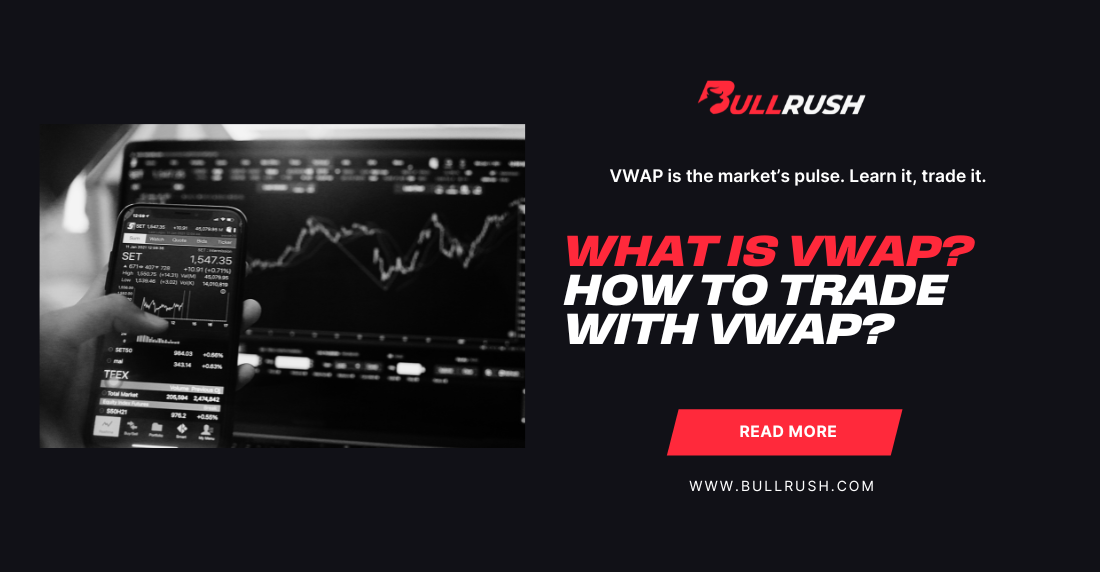[ad_1]
Ever wonder where Wall Street’s biggest players draw the line between “cheap” and “expensive”, in real time? They’re not eyeballing some random moving average. They’re glued to VWAP, the Volume-Weighted Average Price, the intraday line that tells them the exact price where the majority of money has changed hands.
To the untrained eye, it’s just another squiggly line on a chart. To institutional traders, it’s the market’s gravitational center: a line they defend, attack, and use to measure every execution. Learn to read VWAP, and you’re no longer trading in the dark; you’re shadowing the footprints of serious capital.
What VWAP Really Is, Without the Textbook Fluff
Picture this: every trade of the day is a vote. Bigger trades get more votes than smaller ones. Add up all those votes, divide by the number of shares traded; that’s VWAP. It starts fresh every market open and evolves throughout the day, a living, breathing indicator.
If the price is cruising above VWAP, buyers are winning. Below it? Sellers are driving. It’s not about predicting the future; it’s about knowing exactly where the balance of power is right now. Institutions chase VWAP to brag they beat “average execution,” while savvy intraday traders use it as a directional compass.
Tip: Don’t worship VWAP: pair it with volume spikes and price action for confirmation before committing.
Sum up:
- Above VWAP = bullish intraday tilt; below = bearish.
- It’s a benchmark for both execution and bias.
- Combine with context, don’t trade it blind.
How VWAP is Built & Why It’s Simpler Than You Think
The formula’s dead simple: add up (Price × Volume) for every trade, then divide by the total volume. Heavy trades move VWAP more than small ones, making it a truer reflection of where “real” trading happened.
Example:
- Trade 1: $100 × 200 shares = 20,000
- Trade 2: $102 × 500 shares = 51,000
- Trade 3: $99 × 300 shares = 29,700
Total = 100,700 ÷ 1,000 shares = $100.70 VWAP. That’s it.
Tip: The earlier in the session, the more skewed VWAP can be: let it “settle in” before you use it as a bias filter.
Sum up:
- VWAP = Σ(Price × Volume) ÷ Σ(Volume).
- Big trades bend VWAP, small trades barely nudge it.
- Early readings can be jumpy; patience matters.
Trading With VWAP: The Real-World Playbook
Day traders love 2 simple plays:
- Pullback to VWAP in trend: Buy dips above VWAP in an uptrend or short rallies to VWAP in a downtrend.
- VWAP Cross: Price crossing VWAP with conviction often signals a shift in control.
Institutions use VWAP differently: slicing massive orders into smaller ones to match the market’s rhythm, so their average fills stay close to VWAP without tipping off the whole street. You may not have billions to hide, but you can copy their logic: align your moves where liquidity is thickest.
Tip: If you’re fading VWAP, size down: you’re swimming against institutional currents.
Sum up:
- Trend traders: buy dips above VWAP, short pops below.
- Cross traders: watch for volume confirmation.
- Liquidity is your ally; slippage is your enemy.
VWAP Variations: One Size Never Fits All
Anchored VWAP (AVWAP) lets you start the calculation from any point, earnings release, news drop, or market gap, giving you the “average” since that moment. Multi-day VWAP (MVWAP) smooths out short-term noise, and VWAP deviation bands act like Bollinger Bands, highlighting extremes.
AVWAP is perfect for seeing how price respects value zones after a big catalyst. MVWAP is better for swing traders who want a longer view. Bands? They’re for mean-reversion hunters.
Tip: Pick the variant that matches your timeframe: scalpers don’t need MVWAP, swing traders don’t need session VWAP.
Sum up:
- AVWAP = value since a chosen event.
- MVWAP = smoothed multi-day context.
- Deviation bands = volatility edges around VWAP.
The Dark Side of VWAP: Traps That Eat Retail Traders
VWAP’s biggest flaw? It’s a lagging indicator. Early session spikes, giant block trades, or auction prints can warp it. And in low-liquidity markets, it turns into a jittery mess.
Another trap? The fake-out VWAP cross. Without real volume, a cross can be nothing more than a blip, luring in traders before snapping back and wrecking stops.
Tip: Avoid basing trades solely on VWAP in the first 15–30 minutes; let the market shake out.
Sum up:
- VWAP lags; don’t expect it to predict.
- Illiquid markets = unreliable VWAP.
- Crosses without volume are traps.
The VWAP Trade You Can Start Practicing Today
- Wait 30 minutes after opening.
- Check if price is holding above/below VWAP.
- Look for a pullback to VWAP in the trend direction.
- Confirm with MACD staying in trend mode and RSI not at an extreme.
- Enter on bullish/bearish rejection with stops in place.
Tip: Journal VWAP trades with MACD and RSI readings; you’ll see patterns in winning setups fast.
Sum up:
- Delay entries until VWAP stabilizes.
- Use MACD/RSI to confirm bias.
- Stops protect your edge.
Practicing VWAP Like a Pro (Without Burning Capital)
Reading about VWAP is one thing. Trading it in the heat of battle is another. Paper trading lacks pressure; you need a test environment that feels real. That’s where BullRush shines: leaderboards, time pressure, and the same execution decisions you’d face with live money.
You can set up a VWAP-only challenge, test your edge, and see how you stack up against other traders, all while protecting your bankroll. Every entry, every exit, every win, and every loss becomes data for refining your craft.
Tip: Create a VWAP challenge in BullRush’s BYOC; force yourself to trade only setups that align with VWAP rules.
Sum up:
- Practice VWAP in a competitive environment.
- Use rules-based challenges to stress-test your edge.
- Turn practice data into live-trading confidence.
Put VWAP To Work Where It Counts
VWAP isn’t just another line on your chart: it’s the price pulse of the session. Use it to filter trades, gauge bias, and time entries where the big players live. But the real key? Practice until it’s instinct.
BullRush gives you that arena. Set your VWAP rules, step into a challenge, and sharpen your execution against traders who are just as hungry. No theory, no guesswork; just real trading pressure and measurable results.
Join Now!
FAQs
Q: Can VWAP be used for crypto?
Yes, but only in markets with enough liquidity to make volume data meaningful.
Q: Should I trade VWAP on daily charts?
Classic VWAP is intraday; for longer horizons, use Anchored VWAP or MVWAP.
Q: Is VWAP better than moving averages?
Different tools, MAs ignore volume; VWAP is volume-aware. Use them together.
Q: How do I avoid VWAP fake-outs?
Demand volume confirmation and wait for rejection or follow-through.
Q: Best way to learn VWAP?
Backtest, then stress-test in a BullRush competition for a live-feel experience.
[ad_2]
Source link




